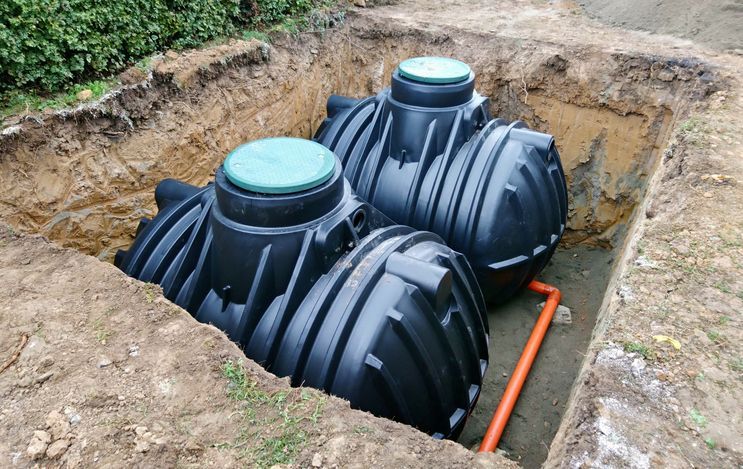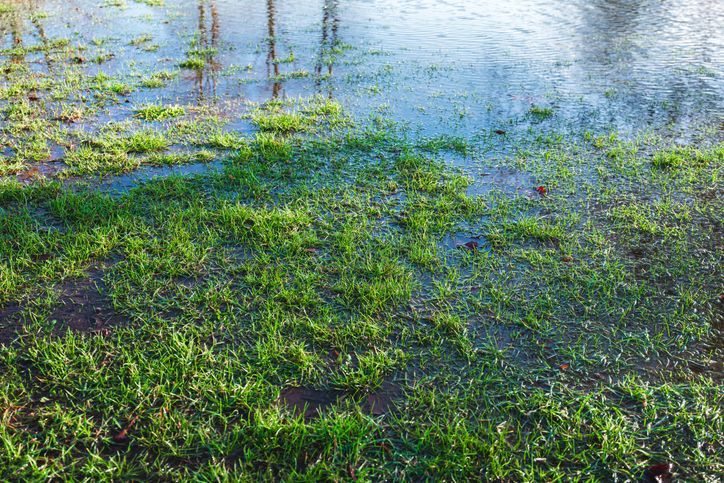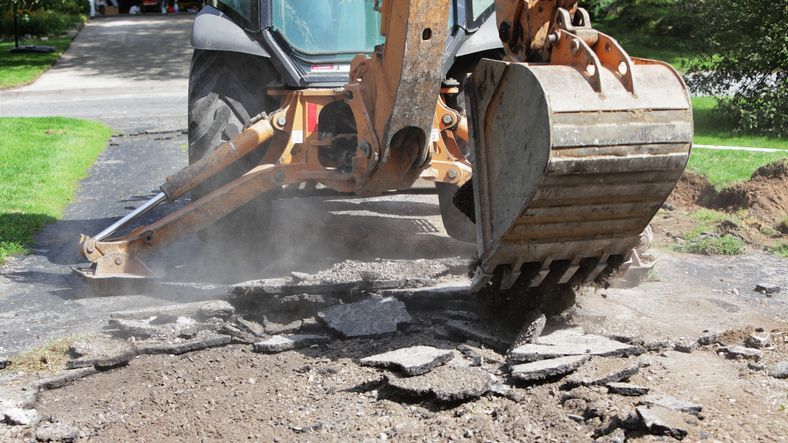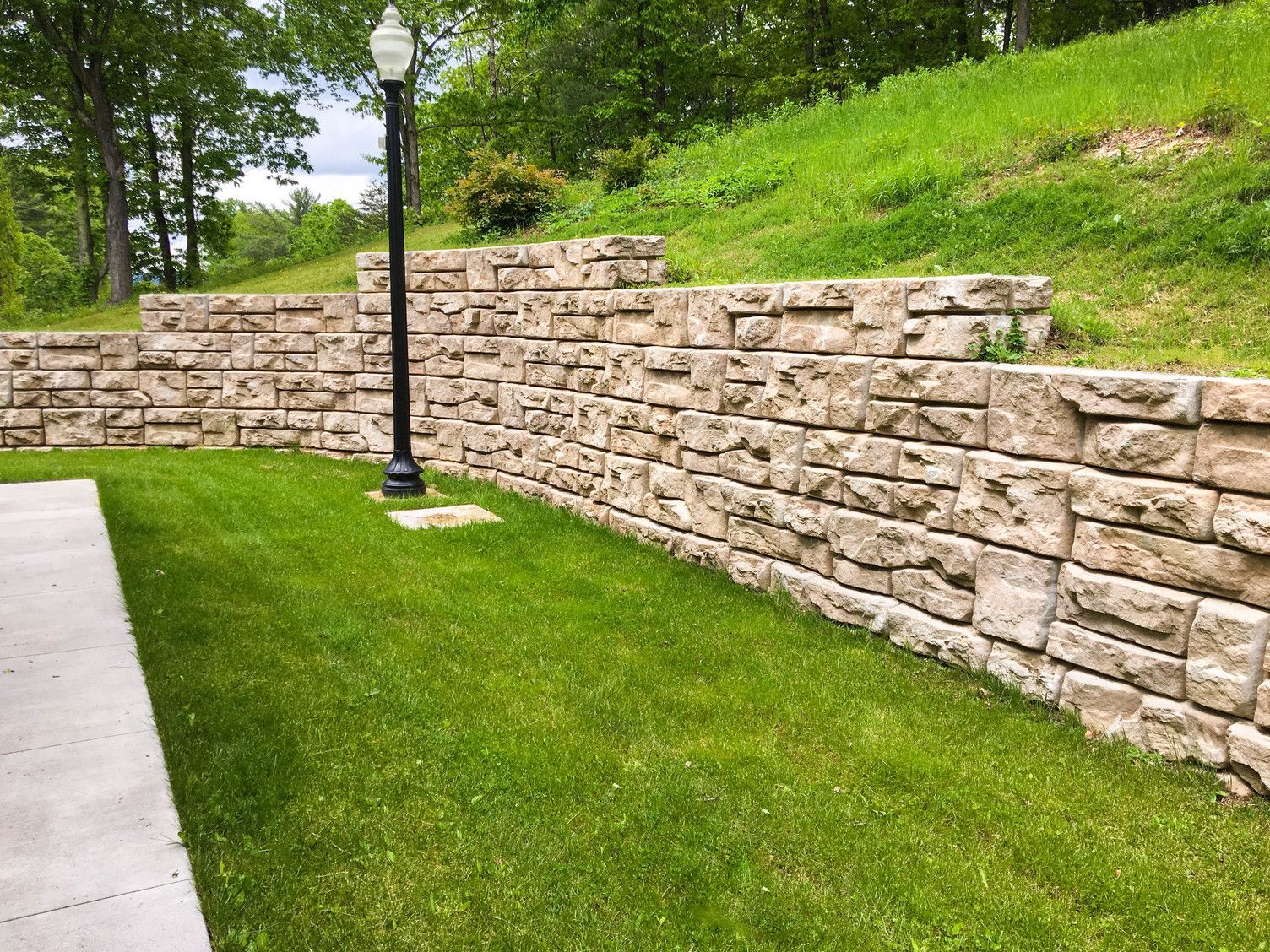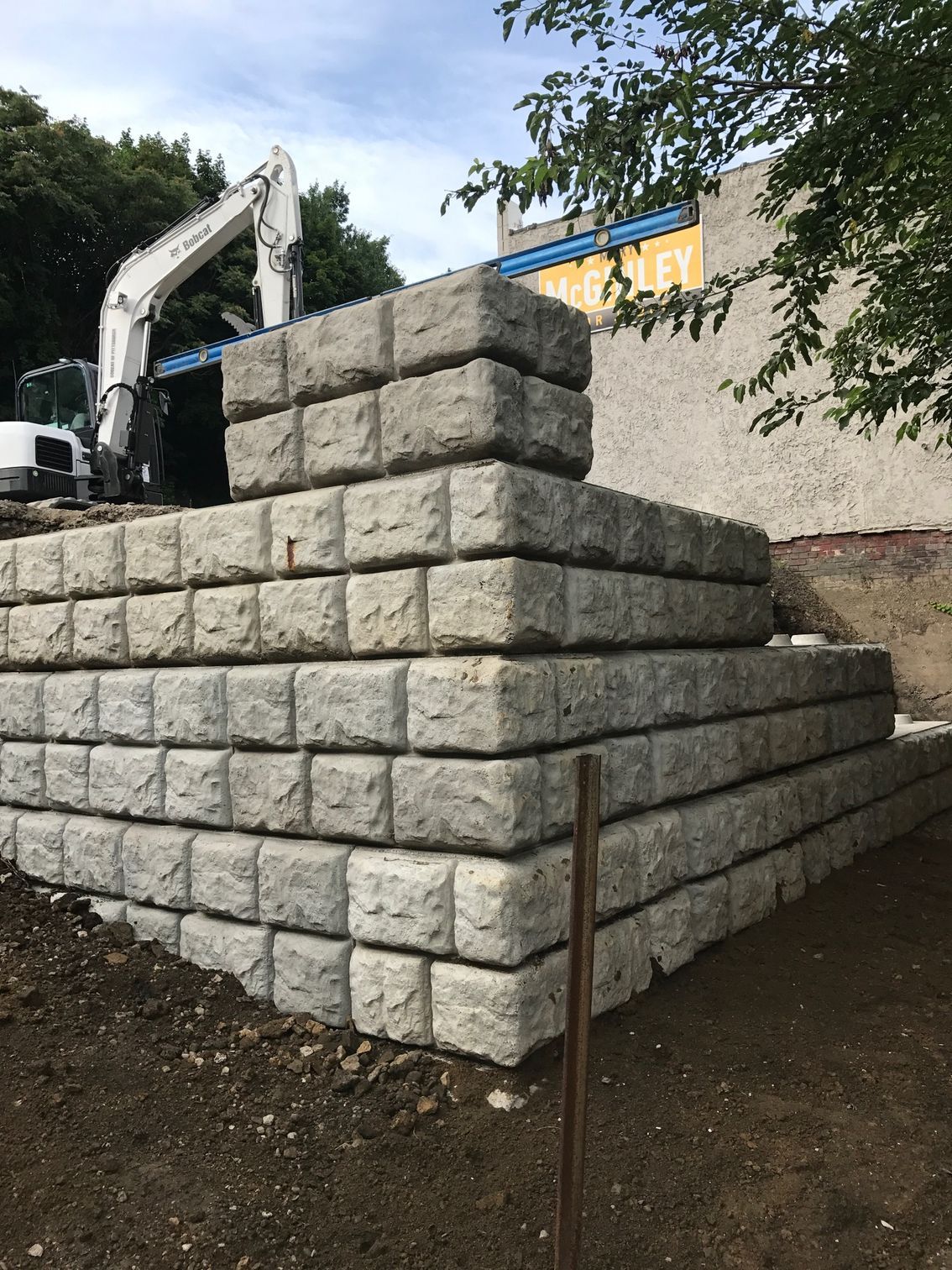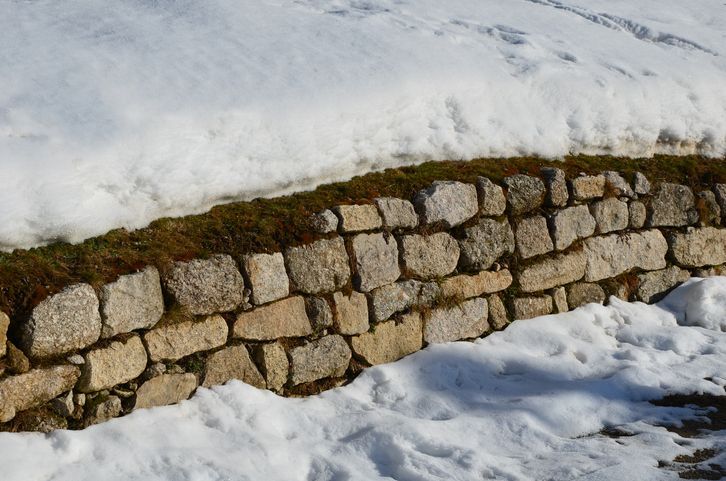How Integrated Hardscaping and Drainage Systems Improve Property Value and Prevent Damage
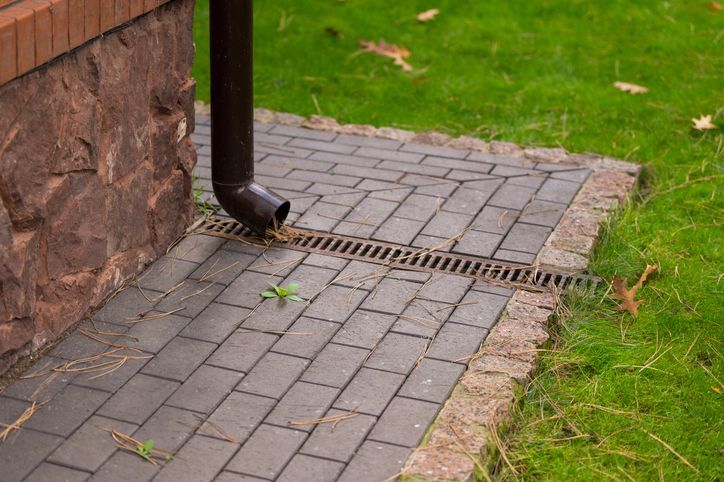
In the hills and valleys of Pittsburgh and the South Hills, a well-landscaped yard does more than boost curb appeal—it protects your home from serious environmental threats. Property owners in our region deal with steep slopes, heavy rainfall, and varied soil conditions that can wreak havoc on outdoor features and home foundations. That's why an integrated approach to landscaping, combining hardscaping and drainage systems, is essential.
Integrated landscape systems are designed with both surface aesthetics and subsurface performance in mind. Retaining walls, patios, walkways, and garden beds are constructed in tandem with French drains, swales, outlet pipes, and smart grading plans. Instead of treating drainage as an afterthought, these systems treat water flow as a core design principle.
At J Bird's Landscaping, we've worked with countless homeowners to solve long-standing water and erosion issues while also improving the beauty and usability of their outdoor space. Our designs are based on real-world experience and customized to each property's needs. Whether you're looking to build a new retaining wall or fix an old drainage problem, we can help you do it right from the ground up.
The Problem: Water Damage and Poor Outdoor Design
Western Pennsylvania's Unique Terrain Challenges
From South Fayette to Mt. Lebanon, many neighborhoods in the South Hills of Pittsburgh are built into rolling hills and steep inclines. These sloped terrains are not just a visual hallmark of the region—they come with built-in water management challenges. When you add in the area's clay-heavy soils, limited absorption capacity, and outdated or undersized municipal stormwater systems, you get a high-risk environment for outdoor property damage.
Rainfall and snowmelt often rush downhill instead of soaking into the ground. Without engineered systems to redirect that water, it travels along the path of least resistance—often across driveways, down foundation walls, or straight through landscaping features that aren't equipped to handle it. The result? Erosion, soggy lawns, flooded basements, and premature failure of your outdoor investments.
Without Drainage, Problems Snowball
In the absence of a well-thought-out drainage strategy, properties in the South Hills commonly experience a cascade of avoidable issues. Three of the most prevalent are erosion, foundation damage, and deterioration of landscaping features.
Erosion sets in when fast-moving water scours the surface of your yard, stripping away topsoil and exposing tree roots. This not only harms plants but also destabilizes the ground itself, increasing the risk of uneven turf and tripping hazards. Water doesn't just disappear; it finds its way toward your home's foundation. During freeze-thaw cycles, trapped water expands and contracts, leading to cracking, bowing walls, and even basement leaks. Once your home has been compromised, repairs become far more complex and expensive.
Signs You Shouldn't Ignore
Many homeowners assume water pooling or soggy spots in the yard are just a seasonal nuisance. But these seemingly minor issues are often red flags. Warning signs include:
- Standing water that lingers days after a storm
- Moss or algae growth on pavers and walkways
- Washed-out mulch or gravel from garden beds
- Water stains or dampness in basement corners
- Settling or tilting retaining walls
- Pavers that shift, sink, or wobble underfoot
- Patches of dead, yellowed, or perpetually soggy grass
These indicators suggest water is not draining correctly, and the longer they're left unaddressed, the worse the damage becomes. What starts as a cosmetic issue can spiral into structural problems that cost thousands to repair.
Why Many Outdoor Features Fail
It's easy to assume a freshly installed patio, retaining wall, or driveway will hold up for years, but without proper drainage engineering behind the scenes, many of these features degrade far sooner than expected. A beautiful retaining wall may collapse prematurely if it lacks gravel backfill, perforated drainage pipes, or weep holes to relieve hydrostatic pressure. Similarly, a patio that isn't graded to slope away from your home will trap water, increasing the likelihood of frost heave, cracking, or mildew buildup.
In fact, some of the most common drainage failures stem from DIY installs or contractors who cut corners. A typical mistake we see is routing a downspout directly onto a flat patio or lawn. This causes water to pool in the same spot again and again, eventually undermining the surface below. Another common error is installing French drains without the correct pitch or a clear discharge point, which causes water to collect instead of flow away.
The takeaway? Drainage isn't a finishing touch; it's also foundational. Without it, even the best-looking outdoor projects are at risk.
How Integrated Hardscaping and Drainage Works
Smart Landscapes Start with Site Evaluation
At J Bird's Landscaping, we know that a durable, functional landscape begins with strategy, not just aesthetics. Before any digging begins, our team performs a thorough site evaluation to uncover the hidden forces shaping your yard. This includes assessing the land's natural grading, slope direction, and soil composition, as well as identifying low spots, compacted zones, and existing water trouble areas.
We also factor in how your property is used throughout the year. Do you host gatherings on your patio? Is your backyard subject to heavy foot traffic or vehicle loads? What parts of the yard are shaded, prone to freezing, or persistently damp? Understanding how water and people interact with the land helps us design a landscape that's both beautiful and built to last.
Western Pennsylvania's weather patterns, like frequent rainfall, freeze-thaw cycles, and saturated springs, make water management essential. By combining our local knowledge with proven drainage techniques, we create outdoor spaces that stay functional, safe, and looking great all year round.
How Each Component Contributes
An integrated drainage and hardscaping system is like a well-rehearsed orchestra; each part has a role, and the performance falls apart without full coordination. Here's how core elements work together:
Site grading subtly reshapes your yard so water naturally flows away from structures. Even small elevation adjustments can prevent water from pooling near your home's foundation or flooding planting beds.
Retaining walls add both structure and stability to sloped yards. Ours are engineered with gravel backfill for drainage, filter fabric to prevent soil migration, and weep holes to relieve water pressure, ensuring long-term durability.
French drains and catch basins act as underground transport systems for excess water. When properly sloped and filled with gravel, they channel water from problem areas—like soggy lawns or low patio corners—to safe discharge zones.
Permeable hardscaping materials, such as porous pavers, crushed stone, or open-joint systems, allow rainwater to filter into the soil rather than rushing over the surface. This helps replenish groundwater while reducing runoff volume.
Outlet pipes, dry wells, and basins are crucial final components. Without a proper exit, water can stagnate in underground systems and eventually overflow or back up into unwanted areas.
Together, these components form a system that mitigates water-related issues while enhancing the usability and visual appeal of your yard.
Integrated Retaining Wall Example
Take a recent project in Bethel Park: the backyard sloped sharply toward the rear of the home, where a decorative retaining wall had been installed years earlier. Unfortunately, the wall lacked drainage, and water buildup caused it to crack and bow.
We replaced it with a multi-tiered, structurally reinforced wall system. Each tier included strategic gravel backfill, geotextile fabric, and perforated piping that connected to a hidden outlet downslope. Not only did the new system stabilize the hillside and protect the home's foundation, but it also introduced flat, usable space for outdoor living and added dimension to the landscape design.
Excavation Makes It All Possible
Many of the most essential drainage components are invisible after installation. Our excavation crew carefully sculpts trenches, basins, and underground channels to direct water away from homes, patios, and plantings. These pathways are designed to minimize disruption to tree roots, neighboring structures, and utilities, while still delivering high-volume capacity and long-term performance.
What you see above ground—walkways, walls, patios—is just the tip of the iceberg. The real strength of an integrated hardscape and drainage system lies in what's beneath the surface.
Property Value and Aesthetic Benefits
Form Meets Function in the South Hills
In the scenic neighborhoods of the South Hills, like Upper St. Clair, South Fayette, and Mt. Lebanon, homeowners often embark on landscaping projects to enhance curb appeal or build a more enjoyable outdoor space. Whether it's adding a stone walkway, designing a terraced garden bed, or installing a backyard patio for summer get-togethers, these improvements can transform the look and feel of a home. However, when visual upgrades are made without proper water management in mind, they often fail prematurely and become a source of frustration and expense.
At J Bird's Landscaping, we believe form and function should go hand in hand. A beautiful outdoor space shouldn't just look great on sunny days; it should also stand strong during the heaviest downpours. That's why we embed smart drainage solutions into every design. Walkways are sloped to prevent pooling. Retaining walls are reinforced with drainage systems that relieve hydrostatic pressure. Patios are paired with swales, French drains, or outlet pipes to keep water moving in the right direction.
The result? Projects that stay attractive and functional for years, with far less maintenance required.
The Real Estate Impact
When it's time to sell, your outdoor space becomes more than just a backdrop; it's also a significant part of your property's perceived value. Homebuyers in the South Hills region often walk around the yard to assess not only the aesthetics but also the performance of outdoor systems. They look for telltale signs of trouble, such as:
- Pooling water on patios or sidewalks
- Cracks in hardscaping caused by frost heave
- Retaining walls that bulge, lean, or lack weep holes
- Low-lying lawns with signs of frequent saturation
- Water stains on basement walls or along foundation lines
These red flags don't just hurt your home's visual appeal—they raise concerns about long-term repair costs. In contrast, a property that features well-drained hardscaping and an intentional layout communicates something powerful. This home has been well maintained and engineered to withstand the challenges of local weather and topography.
Because of this, homes with functional, attractive outdoor features often see stronger appraisals and more buyer interest. A yard that drains properly is no longer just a bonus; it's an expectation in today's competitive real estate market.
Cost Savings Through Prevention
The financial benefits of integrated drainage and hardscaping extend far beyond resale value. When these systems are built right the first time, they reduce the need for costly interventions down the road. You won't have to:
- Rebuild patios damaged by water intrusion.
- Replace sunken pavers or eroded pathways.
- Constantly regrade your lawn to manage runoff.
- Replant shrubs and grass lost to flooding or oversaturation.
Smart landscaping reduces water damage risks, lowers yearly maintenance costs, and allows you to enjoy your yard instead of constantly fighting against it.
In the South Hills, where beauty and durability both matter, integrated hardscaping and drainage systems offer the best of both worlds.
Why Professional Installation Matters
Why These Systems Aren't DIY-Friendly
Many homeowners in the South Hills are no strangers to weekend projects. Installing a gravel walkway, planting shrubs, or assembling raised beds can be fulfilling and cost-effective when tackled solo. But when it comes to integrated hardscaping and drainage systems, projects that alter the flow of water across your property, the stakes are much higher.
Proper drainage isn't something that can be guessed or improvised. It requires a detailed understanding of how water behaves in your specific environment. Missteps in grading, incorrect slopes for drainage pipes, improper backfill material, or failure to account for freeze-thaw cycles can lead to severe structural damage. Worse yet, these mistakes often go unnoticed until costly problems, like water in the basement or a cracked retaining wall, start to appear.
Professional installers take a comprehensive approach, addressing:
- Local stormwater regulations and permitting requirements
- Subsurface soil composition and compaction levels
- Correct excavation depths and safe equipment use
- Foundation clearances and setback codes
- Load calculations for retaining walls, patios, and driveways
- Climate-specific challenges like freeze-thaw cycles and heavy rainfall
When overlooked, even one of these factors can compromise the integrity of your entire project. Inexperienced installations may inadvertently redirect water toward your foundation, flood your neighbor's yard, or damage tree root systems, all of which are costly and complicated to resolve.
Ready to take the first step?
Contact J Bird's Landscaping today to schedule your personalized consultation. We'll walk your property, listen to your goals, and deliver a no-obligation quote with clear recommendations tailored to your yard. Call us or request your quote online, and start protecting your home, your investment, and your peace of mind today.
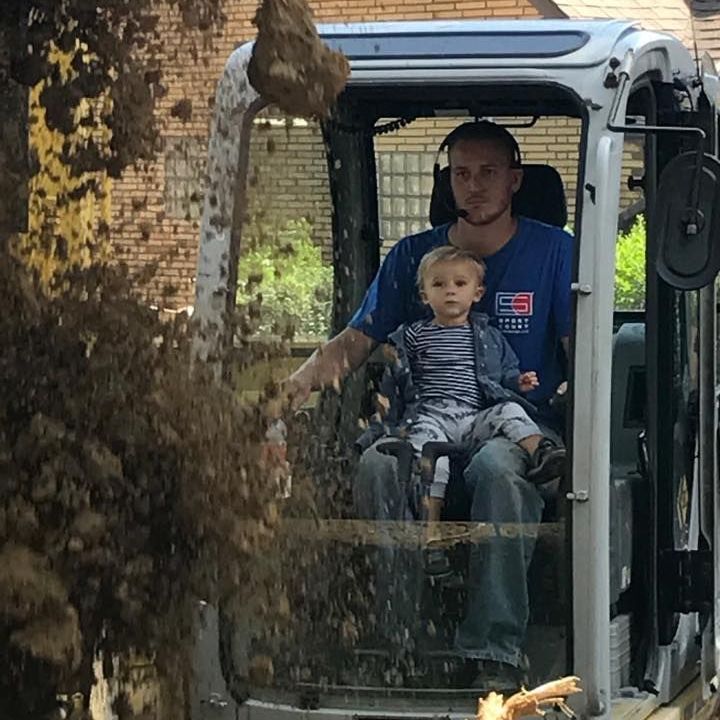
Author: Jay Nagy
Owner & Founded of J Bird's Landscaping. 18+ Years of experience in Pittsburgh lawn cutting, patio installation, trucking/hauling, French drain installation, and other landscape/design services.
More Posts from J Bird's Landscaping
